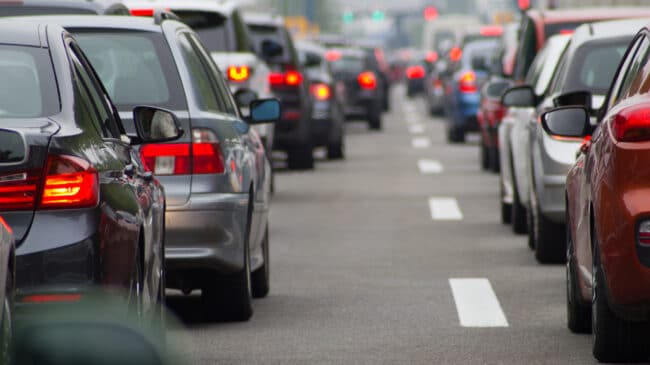For the past 50 years, traffic engineers have been measuring traffic congestion using the level of service (LOS) method. LOS is a quantitative measure that analyzes roadways based on performance measures that include vehicle speed, density, and congestion.
Roadways receive a LOS grade that is similar to grades most of us are familiar with from school: A-to-F grades (with A being the best, and F being the worst). The LOS grades are based on the operating conditions of a roadway’s traffic flow, including speed, travel time, maneuverability, delay, and safety. The more cars that can get through an intersection or section of road while traveling in free-flowing conditions the better. Engineers have used this LOS letter grade to help identify bottlenecks and determine when to make capacity additions and safety improvements to roadways, including better signal timing, additional lanes, and new underpasses.
During the last 10 years, however, some planners and transportation officials have developed a different methodology, which now in use in the state of California—vehicle-miles traveled (VMT). The California VMT-focused system measures the amount of vehicular traffic across the entire system rather than at specific locations on the road system. This measure is typically expressed per person.
California is using VMT in this manner to better “align with state climate policy and sustainability goals.” VMT proponents say LOS was too car-centric and want to focus only on speed instead of considering speed and volume together.
The biggest difference between what VMT and LOS measure is that VMT measures how much actual auto travel a proposed project would create on California roadways whereas LOS measures the traffic congestion levels on those roadways.
Different streets serve different purposes. Traffic engineers divide streets into arterials, collectors, and local roads. Using LOS on arterials—designed to transport commuters-far distances—makes sense because the goal is to move large volumes of traffic relatively far distances. And LOS is the best method to analyze traffic congestion in a region because it measures travel delays and safety, while VMT does not.
Proponents of using VMT to measure roadway conditions say that VMT helps produce more walkable neighborhoods, denser developments, and fewer automobile trips—all of which they believe will help reach climate change and emissions-reduction policy goals.
Yet, people don’t live far from their jobs and have long commutes in many areas of California purely because of the LOS measurement. They do so for other specific reasons. The state’s housing prices and limited housing supply in urban areas can cause people to move far from their jobs in search of affordable housing. Many households have two wage earners with jobs in different parts of their metro area. Living near one job for one person in the household may mean a longer commute to another. In other cases, families may have long trips to work because they choose to live near high-quality schools, near recreational facilities, or close to an aging relative.
While specific places, like downtown Los Angeles, may benefit from using a VMT measurement approach, transportation planners need to also understand how people and freight move around an entire region, not simply one specific area. Today’s on-demand economy featuring package and meal delivery services, for example, relies on being able to deliver goods and services across Southern California. LOS is more important at measuring the things that go into infrastructure planning for the entire Southern California region because it more effectively measures travel delays and congestion on each roadway.
Transportation planners should certainly look at all available data. While VMT may be a better mechanism for certain types of downtown trips, such as short trips between employment and medical appointments or local restaurants, LOS is more effective at measuring trips overall and should be the primary method used to measure traffic congestion.
Reason’s Debatable Ideas series examining transportation and infrastructure issues is available here.

